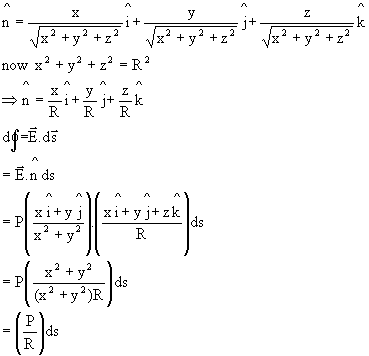Electrostatics - 6
Medium:
Two parallel conducting plates contain charge Q1 and Q2 as shown. Find distribution of charges on four surfaces.

Fig (29)
Consider the Gaussian surface shown.
solution: Two faces lie in the conductor where field is zero, while other two are perpendicular to field direction.
Net charge enclosed = 0
So, the facing inner surface have equal and opposite charges.

Fig (30)
Let C be a point in the conductor –
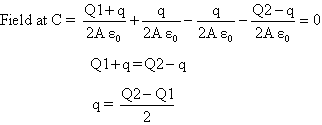
Question:
Why net flux through Gaussian Surface = 0?

Fig (31)
There is no field at 1 and 3
Field at 2 and 4 are perpendicular to E.
\E.dA = 0
So, net Flux = 0
Note: Short cut for parallel plates
1) Charge on facing faces of two plates are equal and opposite
2) Charge on outermost face = ![]() .
.
Q-2: A curved line charge of density l forming a semi-curve as shown. Find electric field at center.
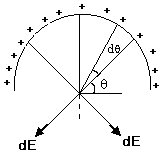
Fig (32)
Consider the two opposite elements as shown.
The field cancels along x-direction.
Consider an infinitely small element substending angle d![]()

Question:
1) What would change if the curve were negatively charged?
Ans: The net field will be upwards.
2) If half of the curve were negatively charged?
Ans: Virtual components cancel while horizontal remains. (Observe yourself)
Q-3: A uniform line charge ![]() exist from x =-a to x= a. Find electric field at point P a distance r along the perpendicular bisector.
exist from x =-a to x= a. Find electric field at point P a distance r along the perpendicular bisector.
solution:

Fig (33)
Considering the field due to two opposite parts, the field cancels along the horizontal.
Along Vertical:
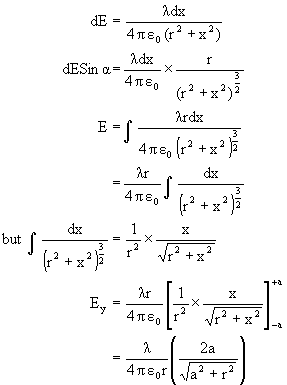
![]()
Q-4: A charge Q is uniformly distributed over a spherical volume of radius R. Obtain an expression for the energy of the system.
![]()
1) Inside the sphere(r<R)
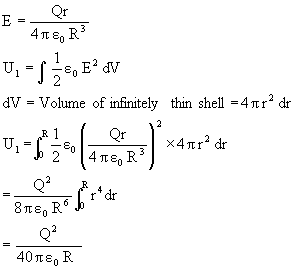
2) Outside the sphere (r>R)
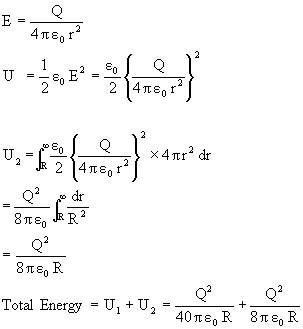
= 
Question:
![]()
solution: Consider a G sphere
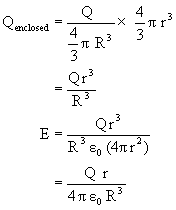
Q-5: Find the potential on the edge of a disc P with surface charge density 6.
Ans:
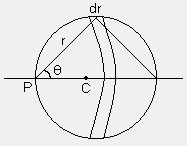
Fig (34)
To calculate the potential at P, the disc is divided as rings with P as center as shown in the figure.
Potential due to element between r and r+dr.


Now r = 2RCosq (as diameter subtends 900 at the edge)
dr = -2RSinqdq.
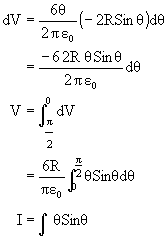
![]() (Applying Integration by parts)
(Applying Integration by parts)

Question:
1) Why were integration limits from p/2 to 0?
Ans: Integration limits were from p/2 to 0 because at p/2, the area around the point would be covered and when angle is zero, the other end of diameter gets covered. Therefore the whole disc is covered.
Q-6: The intensity of an electric field depends on co-ordinates x and y as follows,

Where P is a constant, find the charge within a sphere of radius R with the center at the origin.
solution: At any point A(x, y, z) on the sphere, a unit vector is perpendicular to the sphere radially outward.

![]() Fig (35)
Fig (35)
